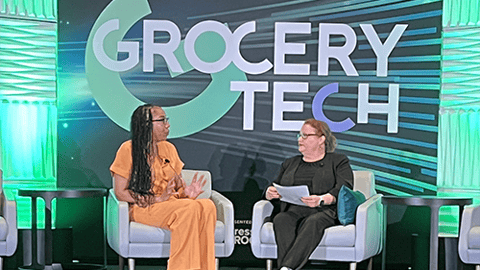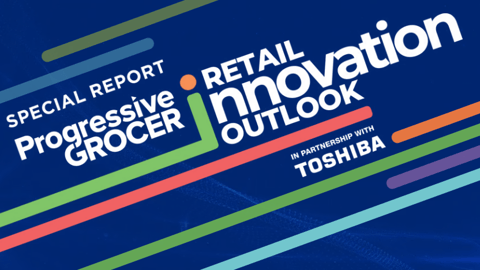Robot Revolution: How Automation Is Transforming Supermarkets
Progressive Grocer sat down with Faizan Sheikh, co-founder, former CEO and current head of customer success at Avidbots – a Kitchener, Ontario-based robotics company behind the autonomous floor-cleaning robots Neo and Kas – to explore how robotics are reshaping grocery operations. In this Q&A, Sheikh discusses how automation helps grocers address labor shortages, reduce costs and boost efficiency; the adaptability and ROI of robotic cleaning solutions; the role of data and AI in optimizing store operations; and what’s next for automation in the grocery sector.
Progressive Grocer: Let’s start with your big-picture vision: How do you see robotics transforming operations in grocery retail over the next five years?
Faizan Sheikh: You’re going to see a fundamental shift for grocers embracing robots to both help them compete in a tough labor market and complete fundamental menial tasks in a cost-effective manner. Avidbots has recognized their need in retail and has designed robots specifically for this vertical – we’ve considered the traditional adoption issues in grocery to inform our R&D.
[RELATED: Progressive Grocer's 92nd State of the Industry Report]
PG: Avidbots’ Neo floor-scrubbing robot is already in use at some major retailers. What specific advantages does it bring to high-traffic grocery environments?
FS: Both Neo and Kas have the requisite obstacle avoidance technology and route-planning intelligence to clean high-traffic areas in an effective and efficient manner. Given this, high consumer traffic is not a hindrance to cleaning while our clients’ stores are open.
PG: Labor challenges remain top of mind for grocers. How can automation like Avidbots help mitigate staffing shortages while improving in-store conditions?
FS: We’re seeing that grocers need to be maniacal about sourcing and retaining human labor for tasks that are not able to be automated by robots yet. An example of this for Avidbots would be someone “pressing go” on our robots to scrub the floors while that person is instead focusing on higher-value areas to clean, like bathrooms, registers, windows, etc.
PG: From a cost-benefit perspective, what is the typical ROI grocers can expect from investing in robotic cleaning solutions like Kas?
FS: Given our leasing program, a lot of our customers are seeing positive ROI in their first month. This is done by either simply insourcing the floor care work to Kas and letting their BSC/FM handle non-scrub requirements, or, if a grocer’s employees are currently tasked with cleaning, having those employees focusing on revenue-generating activities such as stocking shelves. For capital programs, our payback window for the robot investment is typically 12-24 months.
PG: Grocery stores operate in tight-margin environments. How does Avidbots help retailers justify the upfront investment in automation?
FS: Again, our clients think about robots not as “nice-to-haves,” but instead as technology that can contribute to bolstering their bottom line. This is a cost-avoidance initiative – rather than a large upfront investment – in most scenarios we see. Also, the fact that we offer $0 down-payment leasing options gets rid of the need for a large upfront investment altogether.
PG: How adaptable are Avidbots robots to different store formats – from compact urban stores to large-format supermarkets or warehouses?
FS: Quite adaptive. We don’t rely on QR codes or antiquated navigational requirements – the robots use true AI for advanced obstacle avoidance. We’re able to map our client’s facility once, and the robots are able to adjust their cleaning strategy based on a dynamic backdrop, irrespective of the size, layout or type of facility.
PG: Seasonal updates – like end caps or display changes – can throw off many robotics solutions. How does your Seasonal Feature Management capability keep cleaning plans accurate and effective all year long?
FS: Good question. Our robots use lidar to “see,” similar to the technology in most autonomous vehicles. Our obstacle avoidance kicks in whether we’re cleaning amongst shoppers, palleted stock, Christmas trees, or end caps selling chips and nachos for the Big Game – and we’re able to scrub the floor where it is clear and permissible to do so!
PG: Data is a powerful asset. What kinds of operational insights or reporting does the Neo platform provide to store managers or facilities teams?
FS: Our Avidbots Command Center provides detailed cleaning reports to whomever subscribes to them. These reports have data on key metrics our clients care about, including covered area, KPIs, run time, battery and water usage, etc., and can be further subdivided into store, regions or enterprise reporting.
PG: What are some misconceptions grocery retailers might have about robotic automation, and how do you address them in conversations with executives?
FS: Mostly that they’re still uneasy about running the robots amongst their shoppers while their store is open. The technology is there; why not present that your brand is investing in the latest and greatest tech? We share that shoppers love robots – it’s another way to help bring would-be customers back into brick and mortar.
PG: Some grocery executives worry about the cost and complexity of deploying robotics. How do you respond to concerns about ROI and ease of adoption?
FS: The ROI speaks for itself, defined as a no-brainer to us. Deployments are routine and take two to three days, given the largely similar layout of a grocer’s stores – we can easily replicate the initial deployment. Adoption curves are small; we’ve added intricacies to aid, including multilingual UIs, how-to videos stored on the robots, and a world-class customer success team to proactively monitor and encourage usage, to name a few. Finally, leasing allows for savings to be recouped in month one of automation.
PG: As AI capabilities evolve, how is Avidbots incorporating machine learning or predictive analytics to improve efficiency or adaptability?
FS: We’re already using AI today to improve efficiency; an example of this would be our robots sensing blocked aisles – for example, shoppers or employees stocking product, etc. – and avoiding those aisles to come back to them when the coast is clear. The thought is, let’s clean what we can now, then revisit and clean the blocked areas later. That was a huge boost to efficiency and adaptability, particularly in the grocery space.
PG: What’s next for Avidbots in the grocery sector? Are there plans to expand beyond floor care into other automation opportunities for food retailers?
FS: We feel that we have the 20,000-to-400,000-square-foot stores covered well for cleaning automation by Avidbots Kas/Neo. With that said, more robots will be coming down the pike in the future.







